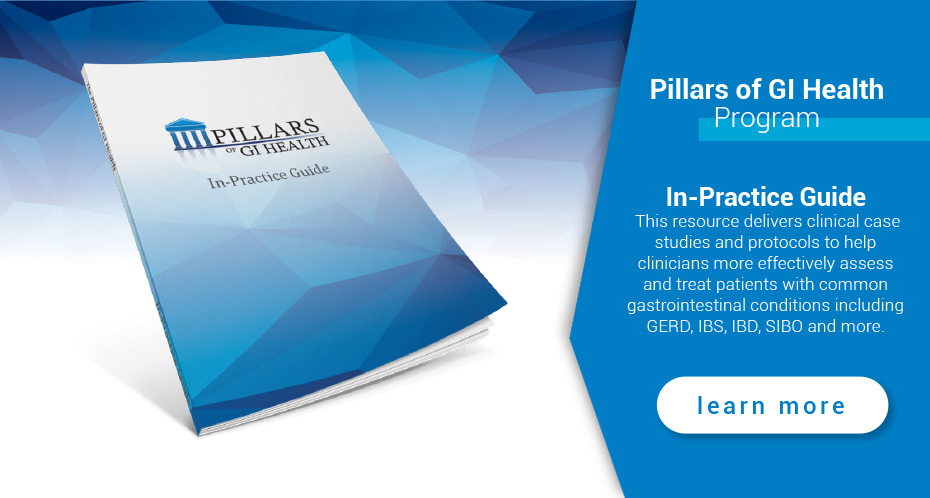Detoxification is a multistep process that not only involves clean eating but also involves awareness of water sources, exposure to toxins (both environmental and foodborne), and proper elimination. One way to think of it is: “We are what we eat,
breathe, touch, and sense and cannot eliminate.” We cannot completely control our exposure to toxins in food, food packaging and the air we breathe. Still, we can take steps to support our ability to eliminate the toxins from our bodies and
reduce exposure in the first place.
In addition, not all toxicity enters our bodies in physical form. We are constantly bombarded with an assortment of external stimuli, from advertising and smartphones to social media notifications that overstimulate our nervous system and leave many of us in a state of wired anxiety. In my opinion, this is another important type of toxicity that needs to be addressed with our patients.
Detoxification Systems
Our main organs of detoxification are the digestive system, liver and kidneys. But an often neglected “organ” system is also intricately involved in detoxification: the gut microbiome. Combined, these cellular systems help protect us from the harmful substances found in xenobiotics, pharmaceuticals and even the metabolites of our own hormones. When out of balance, hormones can be responsible for increasing toxicity within the body.
Phase I Liver Detoxification
Liver detoxification is traditionally discussed as divided into two phases: Phase I and Phase II. The Phase I pathway is primarily controlled by the cytochrome P450 isoenzymes, which are highly inducible. The cytochrome P450 system is the first defense
against potential toxic threats to the body because it helps biotransform xenobiotics, pharmaceuticals and steroid hormones. The isoenzymes create a reactive site on the compound, making it even more potentially toxic, until the Phase II conjugation
enzymes attach a water-soluble group to this now-reactive site.
CYP450 enzymes work through hydrolysis, oxidation or reduction to add a reactive group, such as a hydroxyl, carboxyl or amino acid. Because these intermediate metabolites are highly reactive, they have the potential to cause oxidative damage within the cells that produce them if they do not move into the critical, slower Phase II detoxification process. For this reason, detoxification is a process that has a high demand for antioxidants.
Phase II Liver Detoxification
The Phase II enzymes include UDP-glucuronosyl transferases, glutathione S-transferases, amino acid transferases, N-acetyl transferases and methyltransferases. Whereas Phase I is highly inducible, Phase II is much slower and highly dependent on a patient’s nutrition status. Therefore, overactivity of the CYP450 enzyme system without adequate Phase II support may enhance the destructive effects of environmental procarcinogens.
Estrogen Dominance and Liver Detoxification
We know that enzyme activity in this family of enzymes is widely controlled by genetic polymorphisms. One group, the CYP1 enzymes, is important in estrogen metabolism. CYP1A1/1A2 enzymes catalyze the 2-hydroxylation of estrogens, while the CYP1B1 catalyze the 4-hydroxylation of estrogens.1 Since 4-hydroxyestradiol may play a role in estrogen-related cancers, for example, via the production of free radicals, overactivation of this pathway may be involved in carcinogenesis.
Causes of Estrogen Dominance
Estrogen dominance is a condition where excess estrogen and estrogen-metabolites flood the body. It is related to liver detoxification and can also be caused by dysbiosis. An excess of bacteria in the gut expressing the beta-glucuronidase enzyme leads to cleavage of the water-soluble anchor on estrogen metabolites that allows them to be secreted through the bile into the digestive tract for elimination, thereby allowing estrogen to be released and get reabsorbed into the body.
Benefits of Detoxification
If we consider breast cancer a condition linked to estrogen dominance, then it is easy to understand how supporting detoxification through the liver in these patients is of great benefit to reestablishing hormonal balance. Other conditions of estrogen-dominance (progesterone deficiency) that may benefit from this include prostate cancer, fibrocystic breast disease, a shortened menstrual cycle with spotting, and weight or water retention. Additionally, patients on hormone therapies, such as pharmaceutical estrogens or progestins, bio-identical hormone therapy, or oral contraceptives, may also benefit from detoxification support.
Foods That Support Detoxification
When looking at functional foods that can modulate these pathways, we find that cruciferous vegetables have been shown to act as inducers of the CYP1A1 and 1A2 pathways.2,3 Resveratrol is also a CYP1A1 inducer.4 Chrysoeriol, present
in celery and rooibos tea, has been shown to inhibit CYP1B1 in vitro,5 which may help patients with excessive 4-hydroxylation of estrogens.
Many other foods support detoxification enzymes by either inducing them or inhibiting them. Let’s take a look at a few of them.6
Phase I Supportive Foods (CYP450 Inducers)
- Rosemary
- Fish oil
- Chicory root
- Rooibos tea
- Garlic
- Cruciferous vegetables
- Curcumin
- Green tea
Surprisingly, some of the nutrients, like green tea and curcumin, can also act as inhibitors of certain cytochrome P450 isoenzymes.
Phase II Supportive Foods (Sulfation)
- Caffeine
- Meat (especially liver)
- Fish
- Eggs
- Fruits and vegetables (apple, apricot, artichokes, arugula, asparagus, sweet potatoes and carrots, which are rich in provitamin A carotenes, like β-carotene)
Glucuronidation (UGT)
- Cruciferous vegetables
- Resveratrol (grapes, wine and itadori tea)
- Dandelion
- Rooibos tea
- Rosemary
- Ellagic acid (berries, pomegranate, grapes and walnuts)
- Curcumin
- Astaxanthin (salmon, trout, krill and shrimp)
Glutathione S-Transferases (GST)
- Cruciferous vegetables
- Resveratrol
- Fish oil
- Purple sweet potato
- Curcumin
- Green tea and rooibos tea
- Ellagic acid
- Ghee
- Genistein (as in fermented soy, like miso or tempeh)
Nutrients That Support Detoxification
Aside from foods, there are also other vitamins and nutrients used in the process of detoxification. These assist in augmenting detoxification capacity.
Phase I Supportive Nutrients
- Vitamin B12
- Folate
- Riboflavin (vitamin B2)
- Niacin (vitamin B3)
- Pyridoxine (vitamin B6)
- Flavonoids
- Branched-chain amino acids (leucine, isoleucine and valine)
Phase II Supportive Nutrients
- Glycine
- Taurine
- Glutamine
- Ornithine
- Arginine

Vincent Pedre, MD is the Medical Director of Pedre Integrative Health and Founder of Dr. Pedre Wellness, nutraceutical consultant and spokesperson for NatureMD, CEO of Happy Gut Life LLC, and a Functional Medicine-Certified Practitioner with a concierge practice
in New York City since 2004. He believes the gut is the gateway to excellent wellness. He is also certified in yoga and medical acupuncture. As Spanish-speaking faculty for The Institute for Functional Medicine, Dr. Pedre has taught the AFMCP
in Spanish in Lima, Peru, as well as an introduction to functional medicine in Mexico City. As the bestselling author of “HAPPY GUT®—The Cleansing Program To Help You Lose Weight, Gain Energy and Eliminate Pain,”
featuring his proprietary ‘blueprint’ for healing the gut, the Gut C.A.R.E.® Program—
he has helped thousands around the world resolve their gut-related health issues.
References
1. Tsuchiya Y, Nakajima M, Yokoi T. Cytochrome P450-mediated metabolism of estrogens and its regulation in human. Cancer Lett. 2005 Sep 28;227(2):115-24.
2. Hakooz N, Hamdan I. Effects of dietary broccoli on human in vivo caffeine
metabolism: a pilot study on a group of Jordanian volunteers. Curr Drug Metab. 2007 Jan;8(1):9-15.
3. Walters D, Young P, Agus C, et al. Cruciferous vegetable consumption alters the metabolism of the dietary carcinogen 2-amino-1-methyl-6-phenylimidazo[4,5-b]pyridine
(PhIP) in humans. Carcinogenesis. 2004;25(9):1659–1669.
4. Chow HH, Garland LL, Hsu CH, Vining DR, Chew WM, Miller JA, Perloff M, Crowell JA, Alberts DS. Resveratrol modulates drug- and
carcinogen-metabolizing enzymes in a healthy volunteer study. Cancer Prev Res (Phila). 2010 Sep;3(9):1168-75.
5. Takemura H, Sakakibara H, Yamazaki S, Shimoi K. Breast cancer and flavonoids - a role in prevention. Curr Pharm Des.
2013;19(34):6125-32.
6. Guilliams TG. Functional Strategies for the Management of Gastrointestinal Disorders: Principles and Protocols for Healthcare Professionals. The Standard Road Map Series. 2016;68–80.





